HIDDEN RULES JAPAN vol.1|Buang Sampah di Jepang: Kenapa Ribet Banget?! Pemilahan? Jadwal? Sampah Besar? Tolong?!
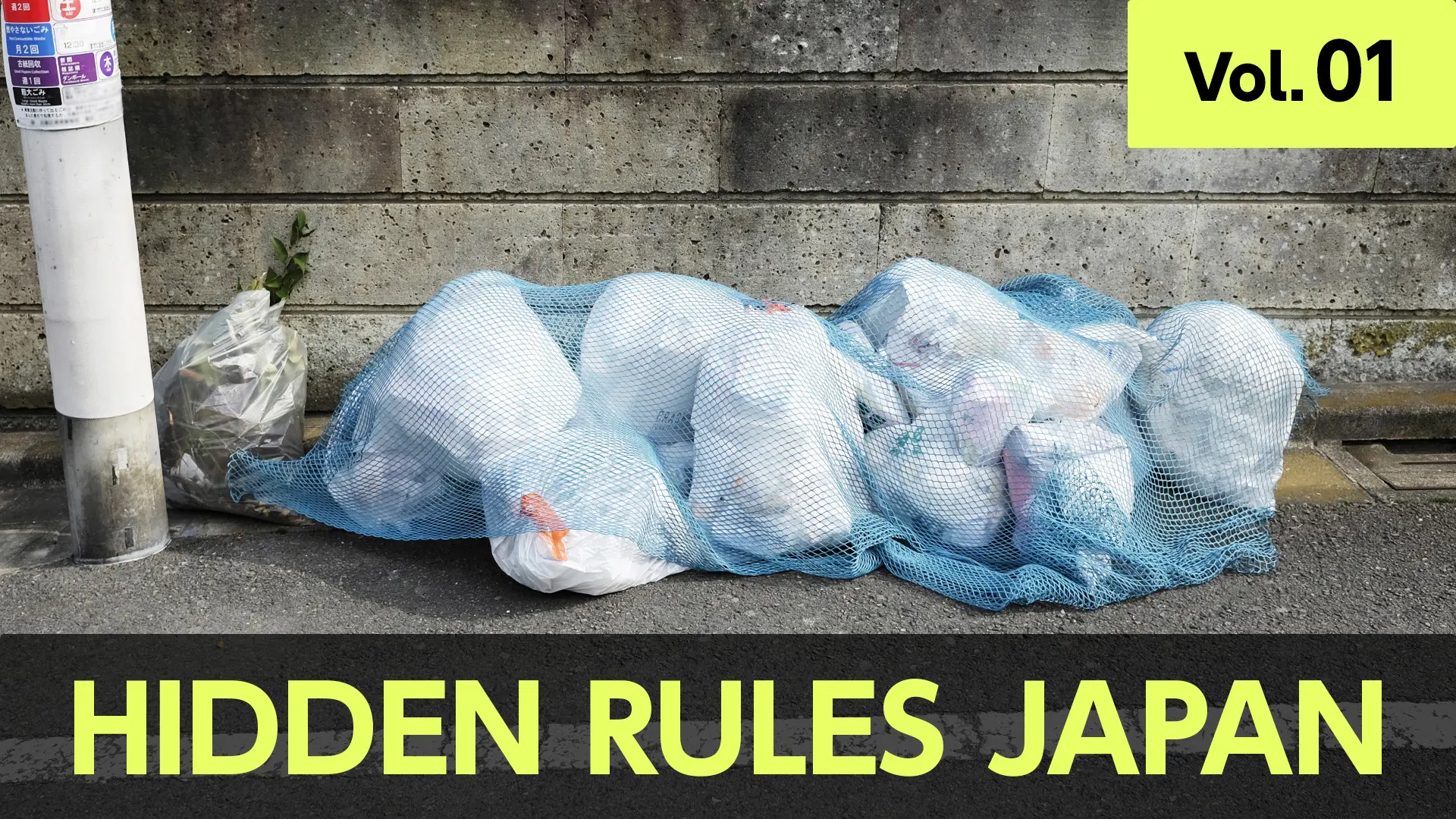
Selamat datang di Jepang!
Salah satu rintangan pertama yang bakal kamu hadapi saat mulai tinggal di sini adalah... buang sampah.
“Ini plastik dibuang ke sampah yang bisa dibakar atau daur ulang ya?”
“Aku mau buang rak besar ini—tinggal taruh di pinggir jalan aja kan?”
Sayangnya... nggak segampang itu, sob.
Aturan buang sampah di Jepang tuh super ketat dan—lebih parahnya lagi—beda-beda tergantung kota atau distrik tempat kamu tinggal.
Yep, ini yang kita sebut “neraka kustomisasi.”
Dalam seri “HIDDEN RULES JAPAN” ini, kita bakal bongkar satu per satu jebakan hidup di Jepang.
Dan edisi pertama ini, kita mulai dengan sang boss level: Panduan Lengkap Buang Sampah & Pemilahan di Jepang!
Sistem Buang Sampah di Jepang Itu Gimana, Sih?
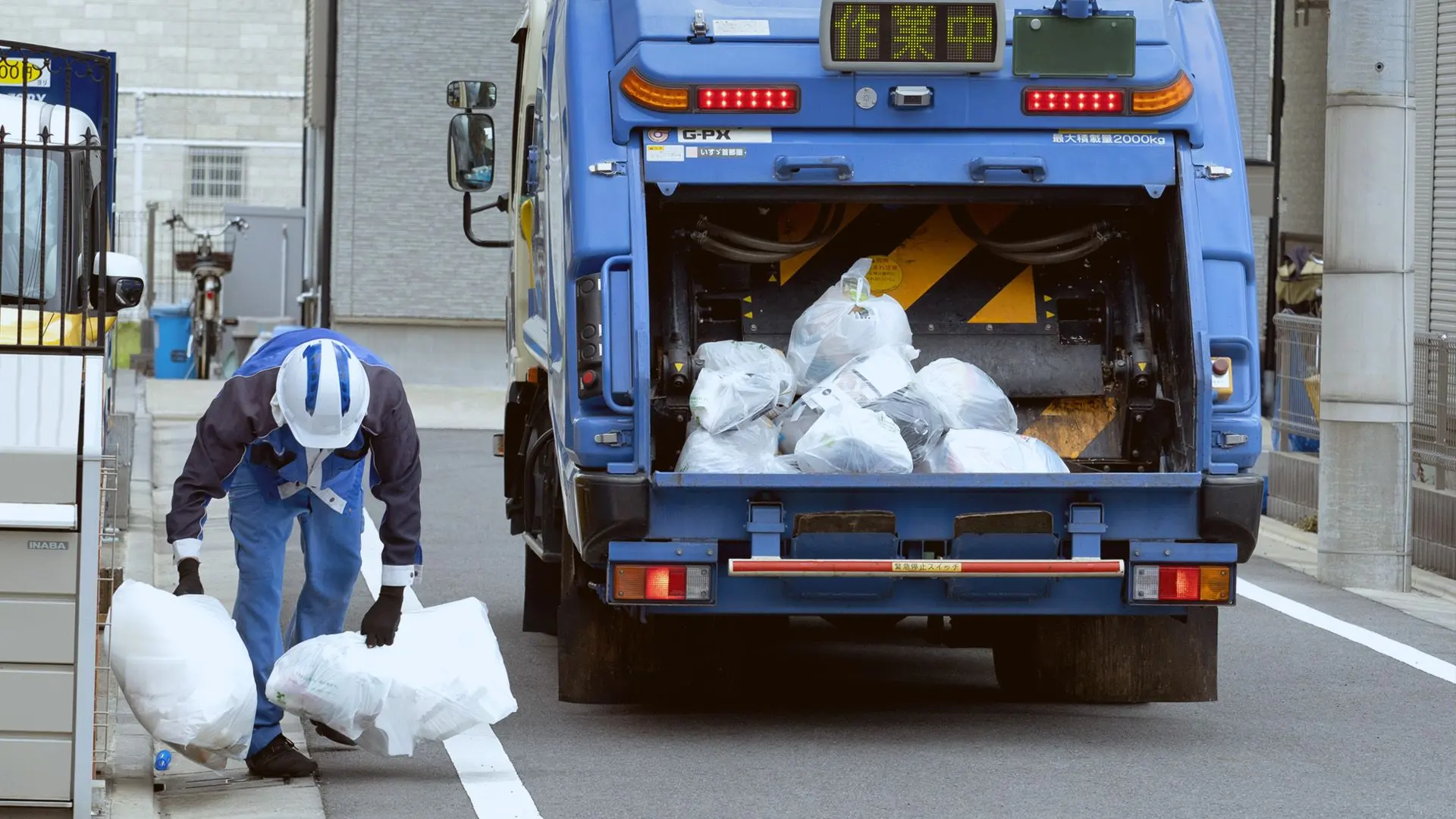
Di Jepang, kamu harus ikutin aturan soal jenis sampah, kapan dibuang, dan di mana dibuang.
Dan yang bikin pusing: aturan ini beda-beda tiap daerah—bahkan antar distrik di Tokyo aja beda.
Misalnya, penanganan plastik bisa beda antar distrik.
Langkah pertama: cek situs resmi pemerintah daerah kamu, atau download aplikasi panduan pemilahan sampah.
5 Kategori Utama Sampah di Jepang
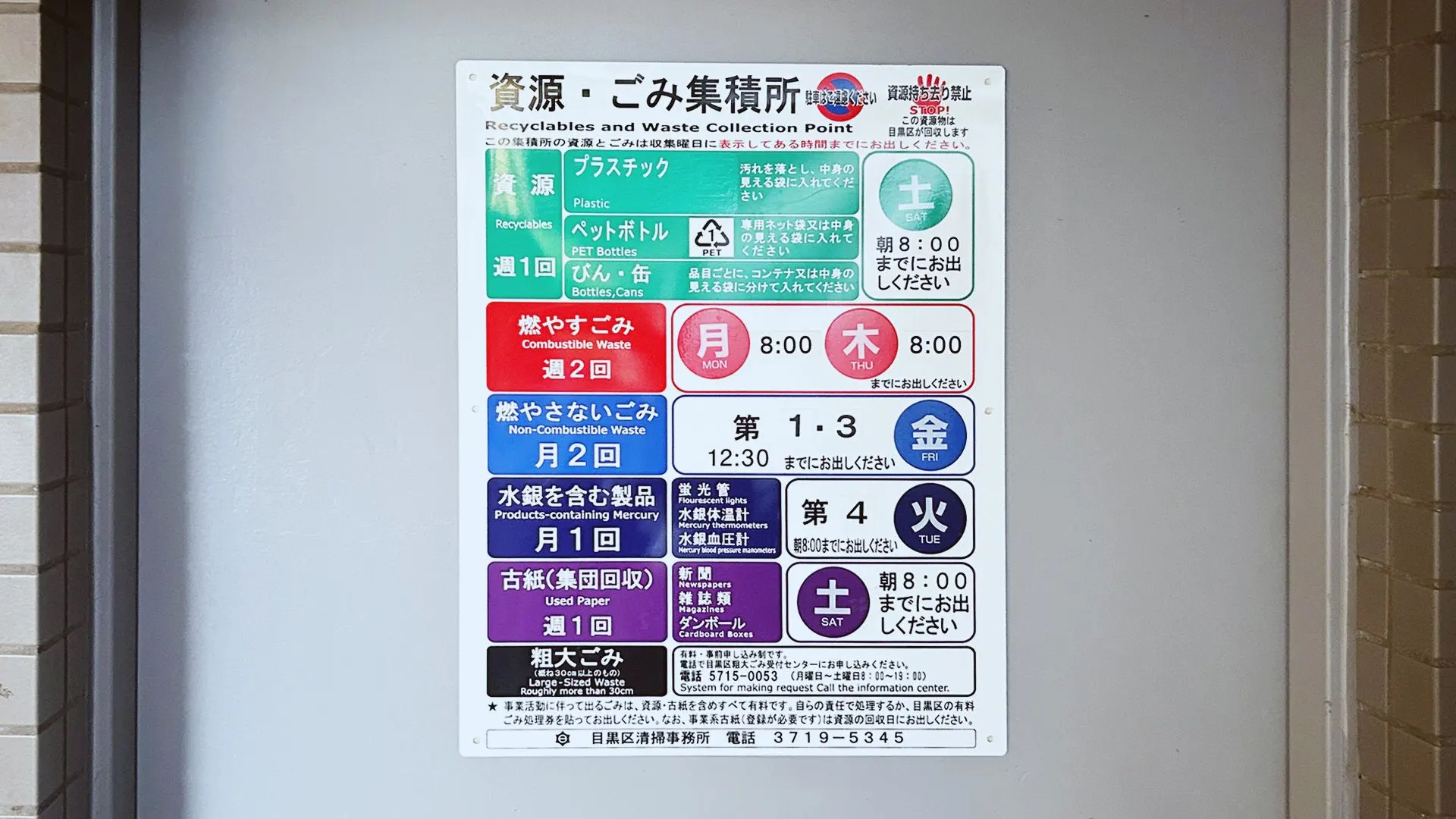
Meski tiap daerah punya aturan spesifik, secara umum ada lima kategori:
1. Sampah yang Bisa Dibakar (Moeru Gomi)
- Sisa makanan, tisu, kertas, plastik kotor, barang dari kulit
2. Sampah yang Tidak Bisa Dibakar (Moenai Gomi)
- Kaca, logam, keramik, gunting, elektronik kecil
3. Sampah Daur Ulang
- Kaleng, botol, botol PET, koran, majalah, kardus
※ Harus dilepas label dan dicuci bersih dulu!
4. Sampah Plastik (yang bertanda “プラ”)
- Wadah makanan, bungkus snack, bento plastik
※ Hanya yang ada logo “プラ” yang termasuk!
5. Sampah Besar (Sodai Gomi)
- Furnitur, kasur, elektronik besar, ember besar, dll
Contoh Nyata: Jadwal Sampah di Distrik Meguro, Tokyo
■ Contoh Jadwal:
-
Daur ulang: 1x seminggu (Sabtu)
-
Sampah yang dibakar: 2x seminggu (Senin & Kamis, sebelum jam 8 pagi)
-
Sampah yang tidak dibakar: Jumat minggu ke-1 & ke-3 (sebelum jam 12:30 siang)
-
Barang mengandung merkuri: Selasa minggu ke-4 (sebelum jam 8 pagi)
-
Sampah besar (sodai gomi): harus reservasi, jadwal ditentukan
■ Tips Penting:
- Gunakan kantong sampah transparan atau semi-transparan
- Buang sebelum jam 8 pagi
- Kalau salah buang, akan ditempel stiker "tidak bisa diambil" di sampahmu!
Perangkap Sampah Plastik: Tidak Semua Plastik Itu “プラ”!
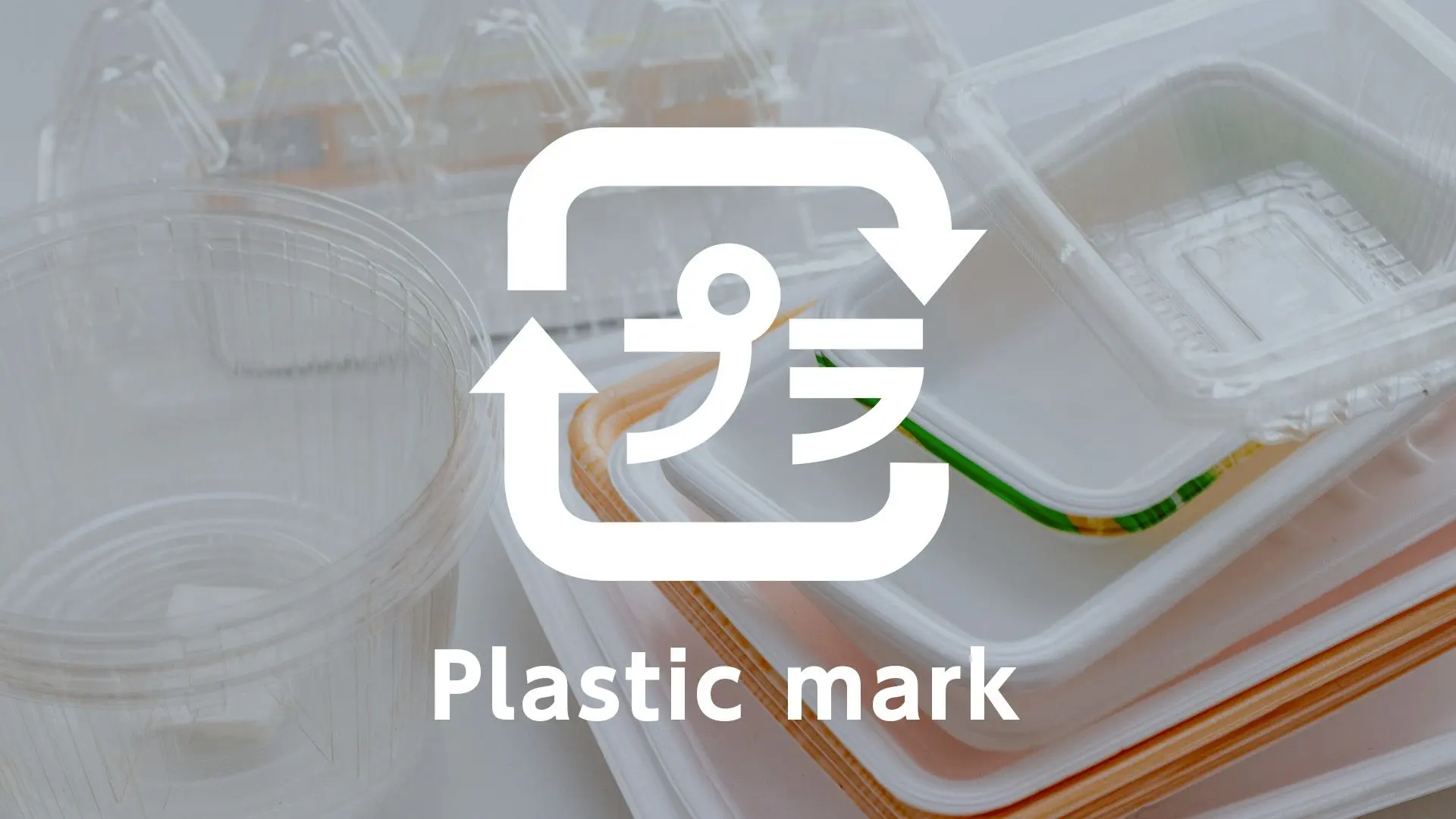
✅ Termasuk “プラ”:
- Wadah makanan
- Bungkus snack dan kemasan luar
- Label botol PET
→ Hanya yang ada simbol “プラ”!
❌ Bukan “プラ”:
- Gantungan baju, sikat gigi, sendok plastik
- Ember plastik, mainan
Benda-benda ini bisa masuk ke “tidak bisa dibakar” atau “sampah besar”, tergantung daerah.
Jam Buang Sampah Itu Super Penting!
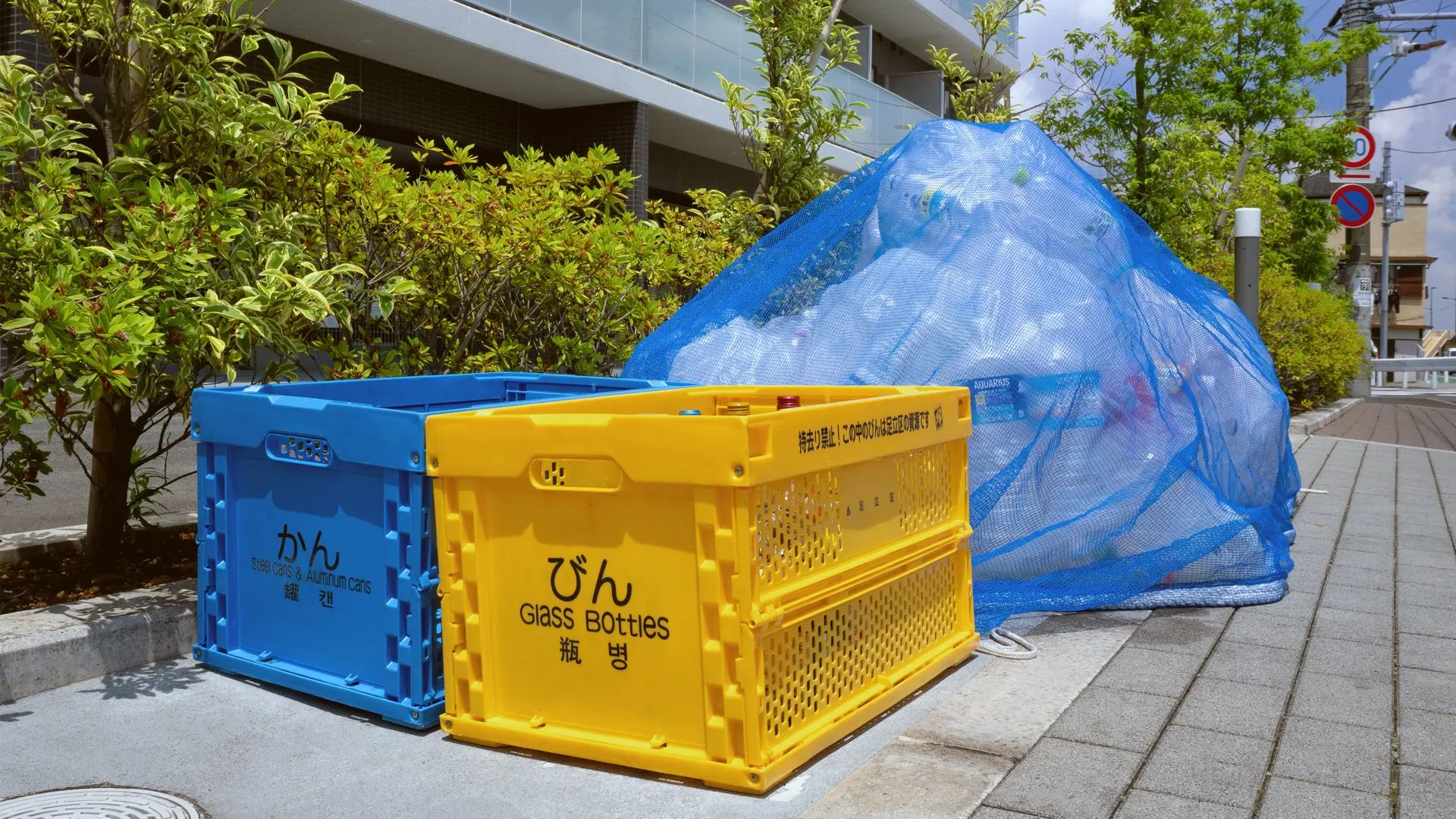
Kamu nggak bisa buang sampah kapan aja.
Aturan umum: buang sebelum jam 8 pagi di hari pengambilan.
✖ Kenapa nggak boleh malam sebelumnya?
- Diacak-acak burung gagak atau kucing
- Bau nyebar, ganggu tetangga
- Nganggu trotoar, bisa dilaporkan
Beberapa kota bahkan melarang buang sampah di malam hari secara eksplisit.
Mode Hardcore: Cara Buang Sampah Besar (Sodai Gomi)
Punya futon, lemari, atau alat listrik besar? Itu masuk kategori sodai gomi—dan nggak boleh asal taruh di jalan.
Parahnya, kalau buang tanpa izin = melanggar hukum.
Ada prosedurnya: reservasi → bayar → beli stiker → buang di hari yang ditentukan.
[Cara Buang Sodai Gomi]
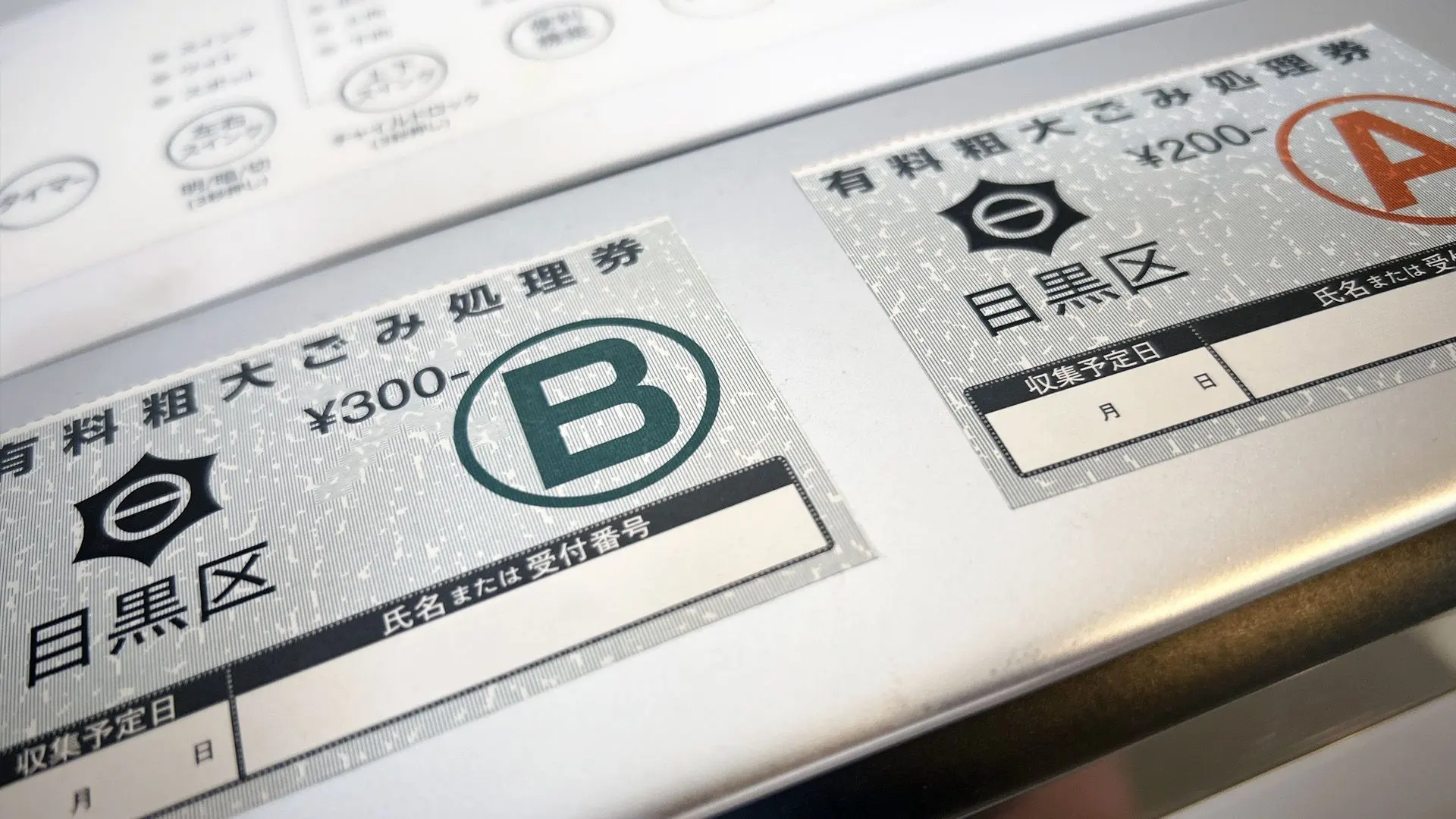
LANGKAH 1|Hubungi pusat layanan kota (via web atau telepon)
Laporkan barang apa saja yang ingin dibuang.
→ Contoh: “timbangan badan”, “vacuum cleaner”, “tempat tidur lipat”
Website-nya kadang bikin frustasi. Tenang… tarik napas… coba lagi.
LANGKAH 2|Cek biaya & tanggal pengambilan
Tiap barang ada harganya. Rata-rata sekitar ¥200 – ¥2,000.
⚠️ Bisa makan waktu beberapa minggu!
Khususnya saat musim pindahan atau akhir tahun, reservasi cepat-cepat ya!
LANGKAH 3|Beli stiker “Sodai Gomi”
Bisa dibeli di konbini (7-Eleven, Lawson, FamilyMart).
Minta di kasir:
“Sodai Gomi A x2, B x1.”
Biasanya hanya bisa dibayar tunai.
Ada dua jenis stiker:
- A (¥200)
- B (¥300)
Gabungkan sesuai tarif.
LANGKAH 4|Buang di tempat & waktu yang ditentukan (sebelum jam 8 pagi)
Taruh di depan rumah atau tempat buang khusus apartemen kamu.
Kalau telat → ulang reservasi dari awal. Nyesek.
Contoh Penggunaan Stiker
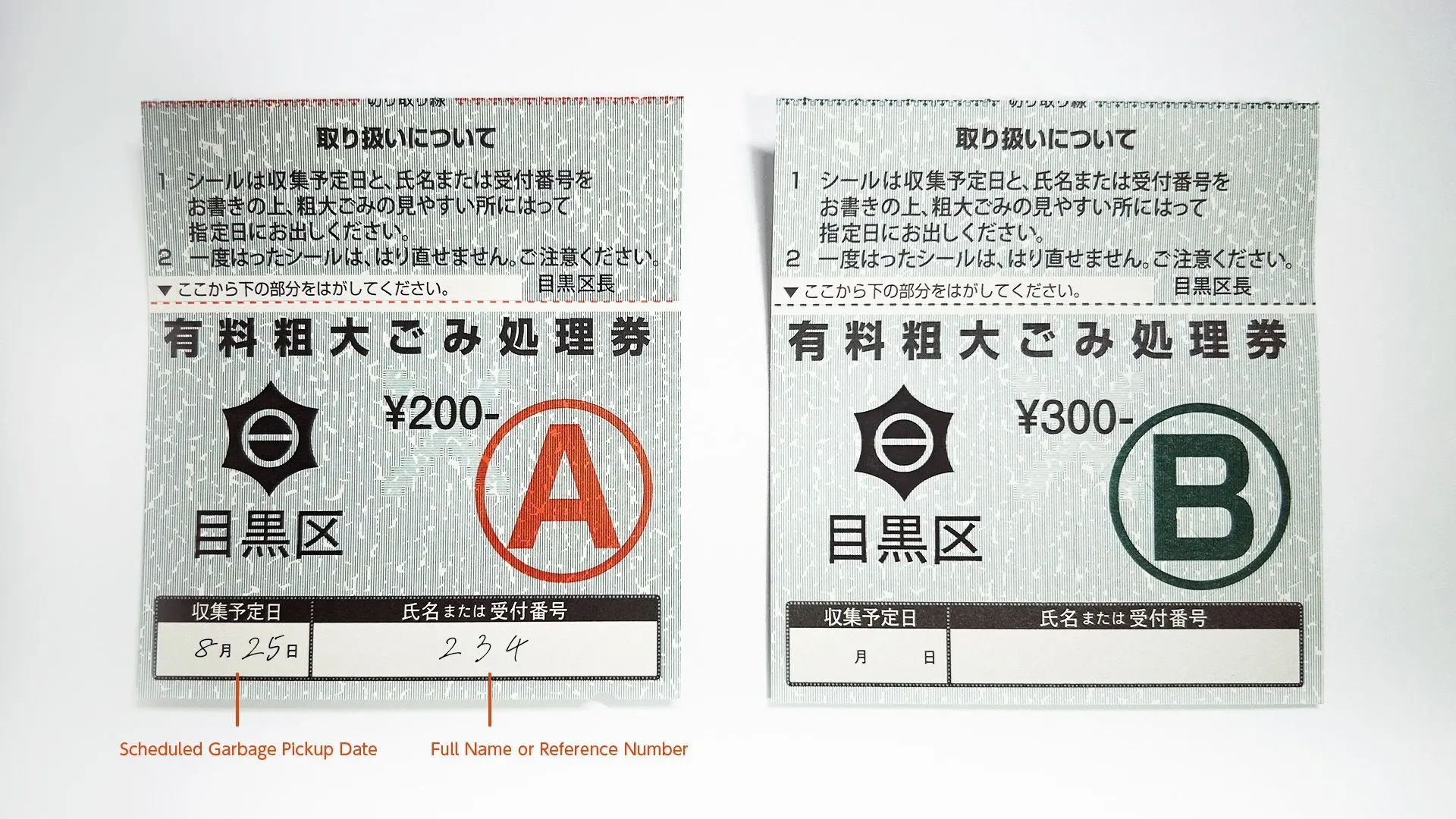
- Timbangan (¥400) → A x2
- Meja kecil (¥600) → A + B
- Tempat tidur lipat (¥1,200) → B x4
Tulis tanggal pengambilan dan nama atau nomor registrasi di stiker.
Kalau nggak mau tulis nama, pakai nomor aja. Aman. (Saya juga gitu.)
⚠️ Barang Elektronik Tertentu Tidak Boleh Dibuang sebagai Sodai Gomi
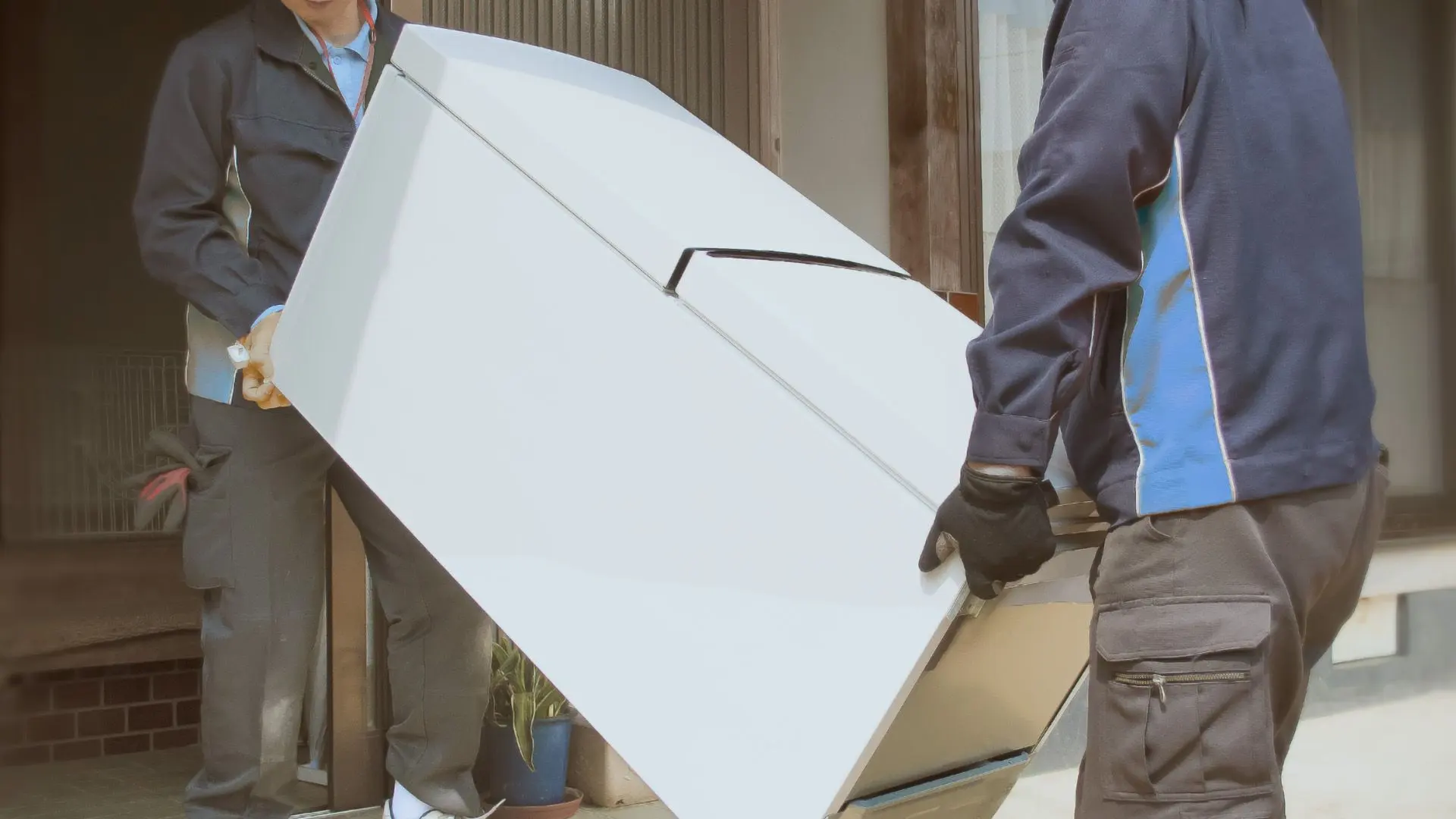
Yang paling sering bikin bingung: 4 jenis barang elektronik ini TIDAK bisa dibuang sebagai sodai gomi.
4 Barang Dilarang:
- Kulkas / Freezer
- Mesin cuci / Pengering pakaian
- TV (CRT, LCD, plasma)
- AC (Air Conditioner)
Pemerintah kota tidak akan ambil ini.
Opsi buangnya:
① Minta toko elektronik tempat beli
→ Kalau beli baru, toko biasanya bisa ambil yang lama (berbayar)
② Gunakan jasa pengambilan resmi yang terdaftar
→ Cek daftar resmi di website pemerintah daerah
③ Bawa sendiri ke tempat daur ulang resmi
→ Bayar biaya daur ulang di kantor pos, lalu bawa ke lokasi pengumpulan
④ Sewa jasa pengangkutan barang bekas
→ Praktis, tapi hati-hati: bisa mahal dan banyak penipuan
🚨 Waspada Penipu!
Kalau lihat brosur atau mobil bak “Ambil gratis!”, hati-hati!
Seringkali itu ilegal dan minta bayaran mahal setelahnya.
Pastikan kamu pakai jasa resmi yang terdaftar oleh pemerintah.
Estimasi Biaya Daur Ulang
| Barang | Biaya Daur Ulang | Biaya Pengambilan |
|---|---|---|
| TV kecil | ¥1,870 | Sekitar ¥1,500–2,500 |
| Kulkas kecil | ¥3,740 | Sama seperti di atas |
| Mesin cuci | ¥2,530 | Sama seperti di atas |
※ Tergantung merek, daerah, dan jasa pengambilannya
❌ Buang Sembarangan = Kriminal!
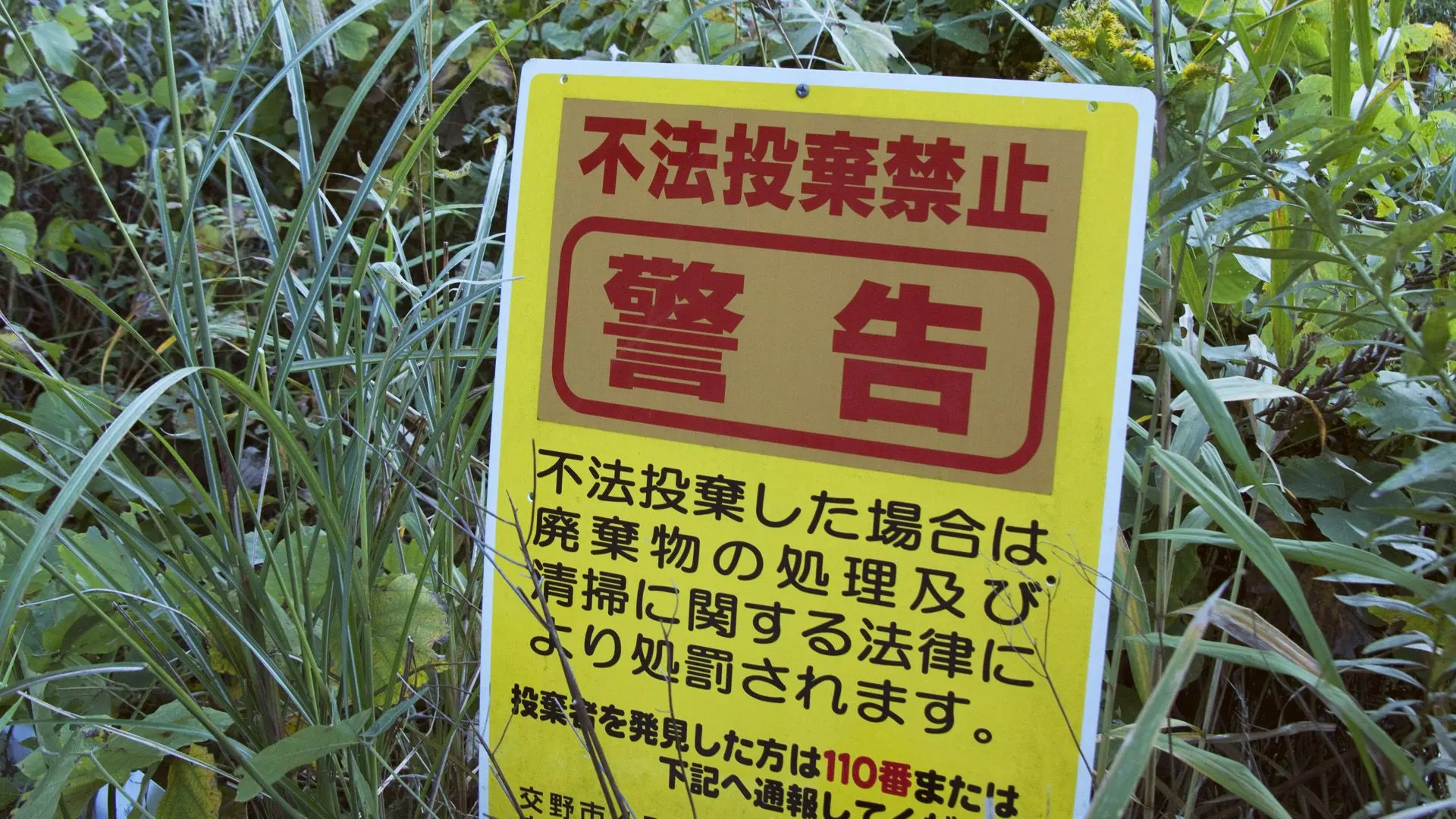
“Mbuang ke gunung aja, pasti nggak ketahuan...”
NOPE. Itu namanya pembuangan ilegal.
Menurut hukum Jepang:
- Perorangan: hukuman penjara hingga 5 tahun atau denda maksimal ¥10 juta
- Perusahaan: denda sampai ¥300 juta
Dan sekarang banyak kamera CCTV, laporan warga, bahkan pelacakan plat nomor.
“Selama nggak ketahuan aman” itu nggak berlaku di Jepang.
RAW JAPAN Comment
Kalau kamu bisa kuasai aturan buang sampah, hidup di Jepang bakal jauh lebih enteng.
Pemilahan sampah itu emang kayak boss level pertama.
Tapi setelah terbiasa, hidup jadi super nyaman.
- Pilah dengan benar & buang sesuai jadwal
- Selalu cek aturan lokal via web/aplikasi
- Untuk sampah besar, reservasi & beli stiker yang benar
- Jangan pernah buang sembarangan!
Kalau kamu bisa atasi ini, kamu udah naik level jadi pro tinggal di Jepang.
Sumber
Artikel ini disusun oleh RAW JAPAN berdasarkan informasi dari berbagai pemerintah daerah.
Karena aturan berbeda tiap kota, pastikan cek ke kantor pemerintah lokal kamu.
Membongkar aturan tak tertulis dalam kehidupan sehari-hari di Jepang. Buang sampah, pakai stempel pribadi, cari taman untuk kembang api— Jepang punya banyak aturan tersembunyi yang jarang dibahas di buku panduan wisata, tapi penting banget buat yang tinggal di sini. Seri ini mengungkap hal-hal kecil yang bisa bikin bingung, lengkap dengan contoh nyata dan tips praktis. Sebelum kebingungan, lebih baik tahu dulu.
